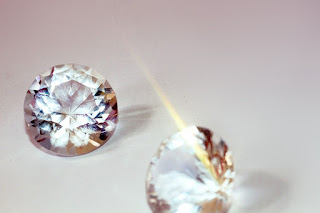The Allure of Gemstones: Exploring the World of Precious Stones
Gemstones are fascinating and captivating objects of desire that have been admired and cherished for centuries. These natural treasures are not only admired for their beauty but also their rarity, history, and symbolic significance. From rubies to emeralds, diamonds to sapphires, the world of gemstones is vast and diverse. In this article, we'll explore the allure of gemstones, their history, symbolism, and value.
History of Gemstones
Gemstones have been revered since ancient times, and their use dates back to the earliest human civilizations. The Egyptians, for instance, used precious stones such as lapis lazuli, turquoise, and carnelian in their jewelry and religious ceremonies.
The Greeks also prized gemstones, and they believed that certain stones had special powers that could protect the wearer from harm. The Romans, on the other hand, valued diamonds for their hardness and believed they had supernatural powers.
Symbolism of Gemstones
Gemstones have long been associated with symbolism and meaning. Different cultures have attributed different meanings to various stones. For example, the ancient Greeks believed that amethysts could prevent drunkenness and promote clarity of thought.
In China, jade is considered to be a symbol of purity and nobility, while in India, rubies are associated with vitality and passion. The symbolism of gemstones has continued to evolve over time, and today, they are often used to mark significant life events such as engagements, weddings, and anniversaries.
Value of Gemstones
The value of gemstones is determined by several factors, including rarity, color, clarity, cut, and carat weight. Rarity is perhaps the most important factor in determining the value of a gemstone. The rarer a stone is, the more valuable it is likely to be. Color is also a crucial factor, as certain colors are more desirable than others.
For example, a deep red ruby is considered more valuable than a lighter pink one. Clarity refers to the degree to which a gemstone is free of inclusions or blemishes. The fewer inclusions, the more valuable the stone. Cut is also important, as a well-cut stone will exhibit maximum brilliance and fire. Finally, carat weight is a measure of a gemstone's size, and larger stones are generally more valuable than smaller ones.
Types of Gemstones
There are many different types of gemstones, each with its unique characteristics and properties. Here are a few of the most popular gemstones:
Diamonds - Diamonds are the most popular and widely recognized gemstones in the world. They are valued for their brilliance, fire, and durability.
Emeralds - Emeralds are known for their rich green color, which is caused by the presence of chromium and vanadium. They are also relatively rare and highly valued.
Sapphires - Sapphires are available in a range of colors, but the most popular are blue sapphires. They are prized for their color, hardness, and durability.
Rubies - Rubies are known for their deep red color, caused by the presence of chromium. They are highly valued and often associated with passion and vitality.
Conclusion
Gemstones have captivated humans for centuries, and their allure is as strong today as it was in ancient times. These natural treasures are not only beautiful but also symbolic and valuable. Whether you are admiring a diamond's brilliance, an emerald's rich green color, or a ruby's deep red hue, there is no denying the enchanting allure of gemstones.
References:
- https://www.linkedin.com/pulse/unleashing-mystical-powers-gemstones-gerome-nou/
- https://medium.com/@ivanekaputralukman/the-enchanting-world-of-gemstones-3f5ab1869f97
- https://gemstoneunited.bravejournal.net/
- https://telegra.ph/The-Characteristics-of-Gemstones-03-10
- https://www.launchora.com/story/the-7-precious-stones
- https://alabamakid.substack.com/p/the-healing-power-of-amethyst-exploring
- https://www.vingle.net/posts/5509237
- https://sociabuzz.com/lisalub/c/47957/how-to-care-for-gemstones-tips-for-keeping-your-stones-looking-their-best-47957
- https://www.furaffinity.net/journal/10505737/
- https://writeonwall.com/the-ultimate-guide-to-gemstone-care/
- https://bowonugroho6.artstation.com/projects/399xvJ
- https://truxgo.net/blogs/386641/1497411/how-to-choose-the-right-gemstone
- https://www.storeboard.com/blogs/collectibles/the-ultimate-diamond-buying-guide/5590122
- https://www.bodynsouls.org/profile/gemstonebenefits/profile
- https://www.instapaper.com/p/12210241
- https://talkotive.com/read-blog/91025
- https://www.articleted.com/article/614316/102546/How-to-Choose-The-Perfect-Gemstone--A-Comprehensive-Guide
- https://uberant.com/article/1908043-the-ultimate-guide-to-diamond-care/
- https://www.scoop.it/topic/tips-dan-cara/p/4142308372/2023/03/31/exploring-the-world-of-precious-gems
- https://gerome.federatedjournals.com/how-to-choose-the-right-amethyst-stone/
- http://publish.lycos.com/hanyabayangan/2023/04/01/how-to-choose-the-right-citrine-stone-for-you/
- https://www.patreon.com/posts/80875513
- https://gemstone101.mystrikingly.com/
- https://theomnibuzz.com/citrine-stone-care-a-guide-to-keeping-your-citrine-shining-bright/
- https://www.party.biz/blogs/69646/227684/diamonds-care-how-to-take-care-of-your-precious-gemstone


